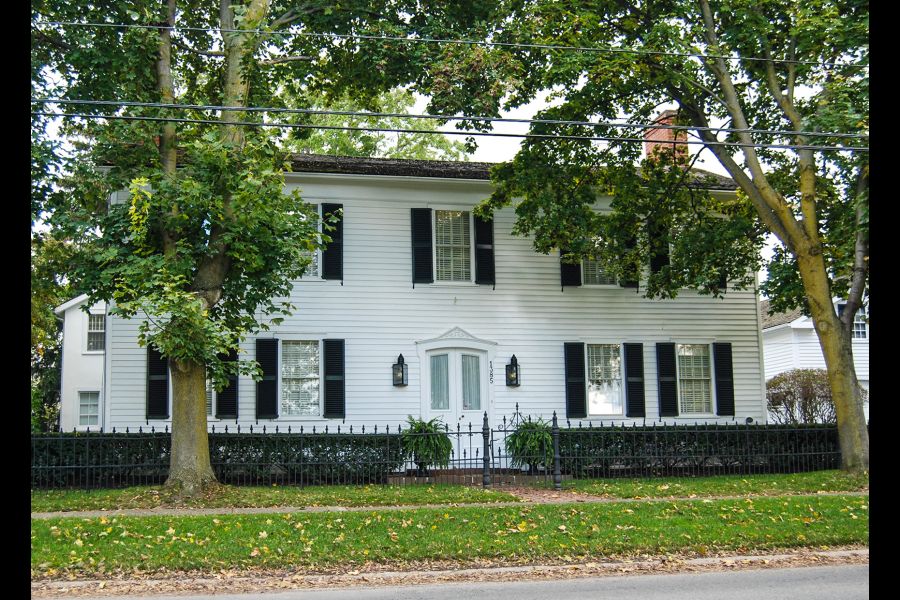It is a bit of a challenge for me to write about St. Davids in the context of this column since in recent years this village has come to typify what can happen when a locale is abandoned without an articulated vision for development, design review guidelines and effective administration (enforcement) of both.
Still, while from a design and planning perspective there may have been questionable (i.e. Mississauga-like) development in the village, St. Davids has a long history, possessing some very fine surviving examples of our built heritage.
Take, for example, the Woodruff-Rigby house at 1385 York Rd. Constructed circa 1815, this gracious five-bay Georgian dwelling has been lovingly cared for, restored and maintained by its owners of nearly five decades.
It is thanks to them that the original white clapboard is still in place after more than 200 years; a testament to the durability of this cladding choice. And the chimneys you can see service six original fireplaces. Although the front door and surround is a circa 1870s Victorian modification, it still tells part of the story of this fine home.
On the opposite side of York Road at #1388, #1376 and #1359, are three superb examples of the uniquely Canadian expression of Edwardian Classicism.
Across Four Mile Creek Road, running off York Road, is Paxton Lane and, on the corner, is Locust Hall, built again by the Woodruffs circa 1823. This solid brick home is stylistically Neo-Classical with substantial limestone quoins and watertable. Note the main entry and ranked window surrounds.
At the end of Paxton Lane is the Secord-Paxton House. This is one of the few dwellings in Niagara-on-the-Lake that pre-date the War of 1812, having not been put to the torch. It is heritage designated, its condition deplorable and it is owned by a developer. In my opinion, a perfect example of demolition-by-neglect that should be addressed by the Town of Niagara-on-the-Lake.
Moving to Four Mile Creek Road, if one turns north, at #290 is St. Davids’ Clement House (distinct from the Clement House in Virgil). This dwelling, originally built circa 1786, was burned in 1814 but the structure is believed to have partially survived and been incorporated when the house was restored after the war ended.
Remaining on Four Mile Creek, on the south side of York, are several houses that I have featured in past articles, the first of which is the Duggan House at #238. Displaying as it does Edwardian, Arts & Crafts and Prairie influences, it’s circa 1911 build was done when concrete block was the new cutting-edge vogue material for statement homes.
Another survivor of the War of 1812 is the Peter Secord House at #215. A pretty little home constructed of whirlpool sandstone it was featured in my Aug. 19, 2020, column that is available on the Niagara Now website.
And across the road, we cannot forget the Woodbourne Inn, another Woodruff home. Read more about it at heirloomhomeguide.ca/rare-unique-storied (scroll down to the fourth page).











